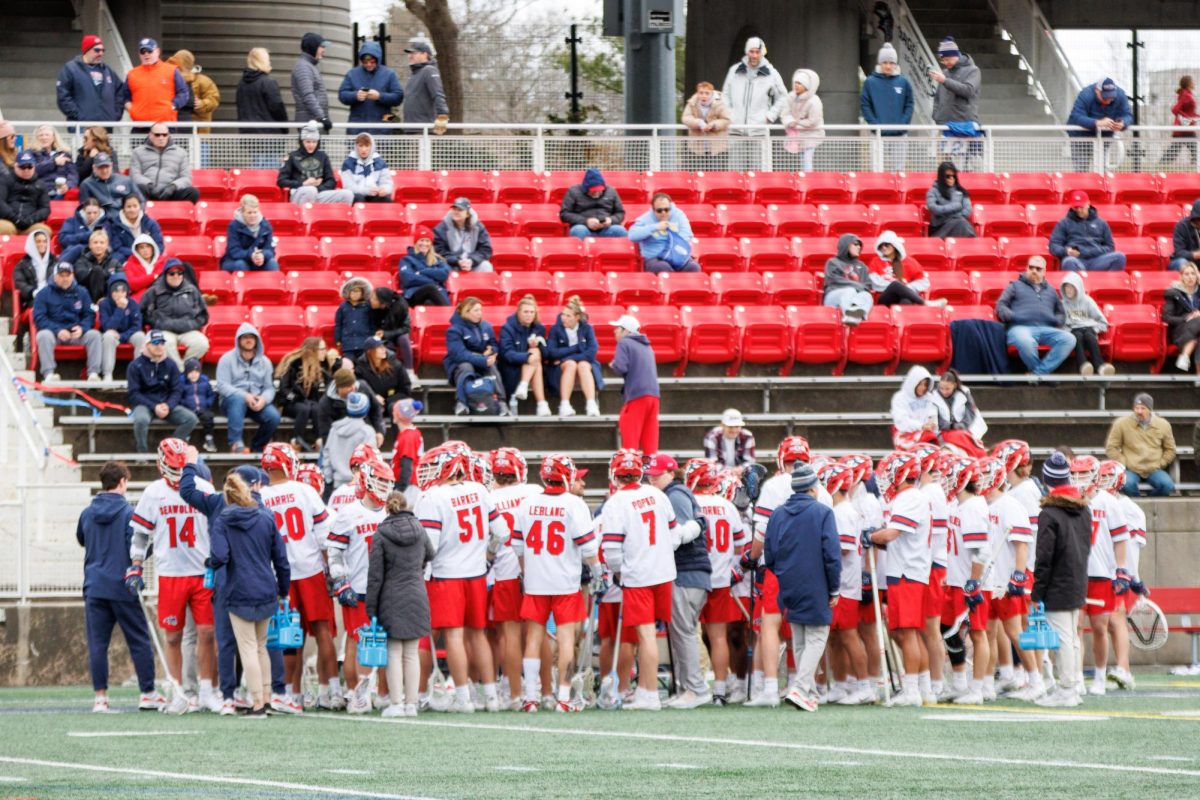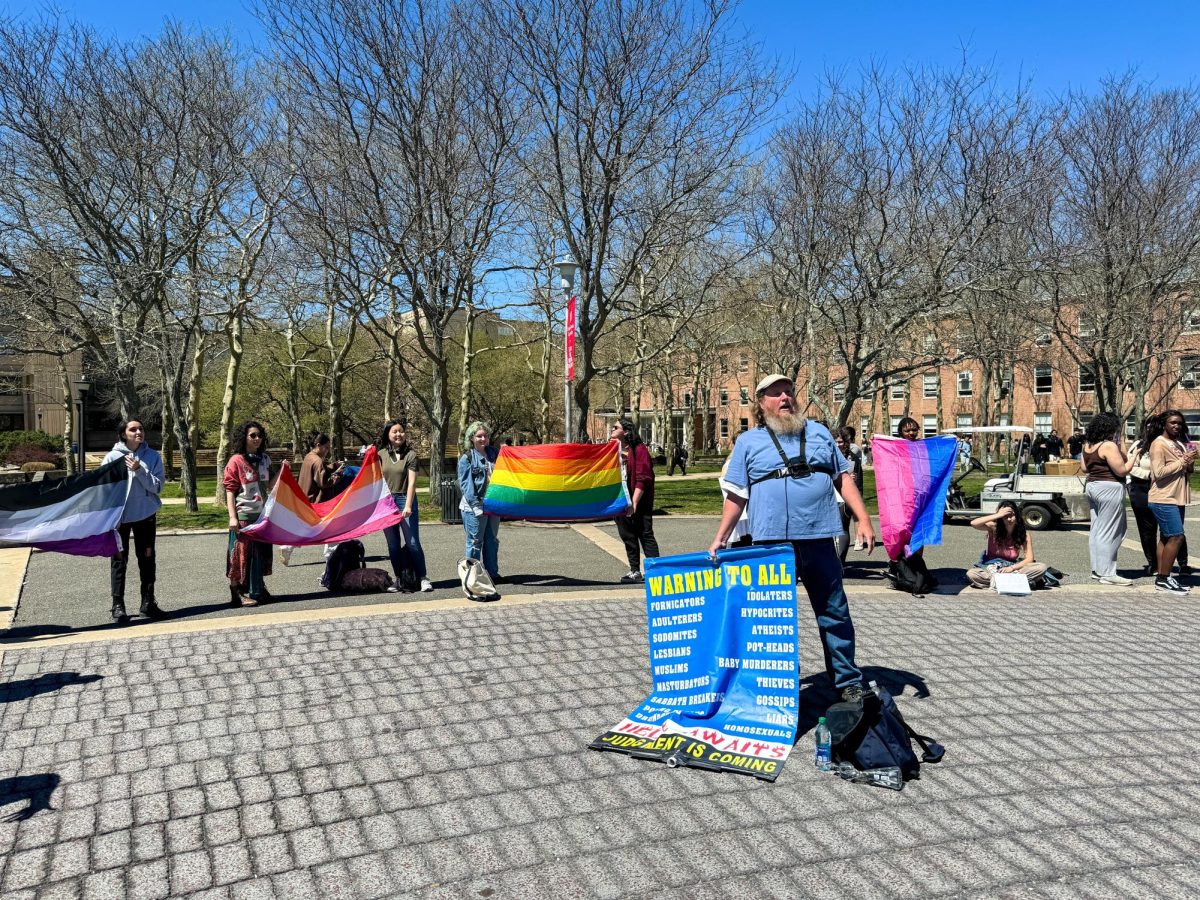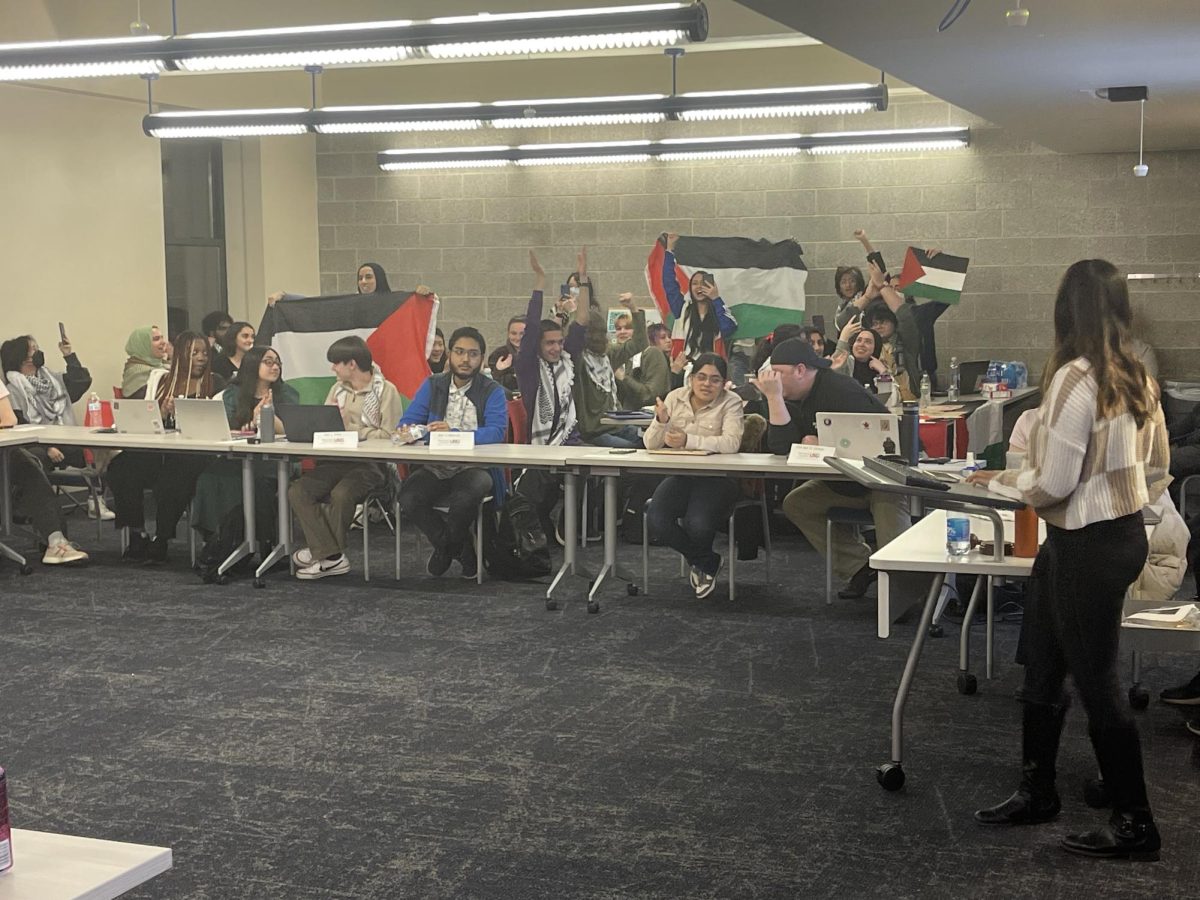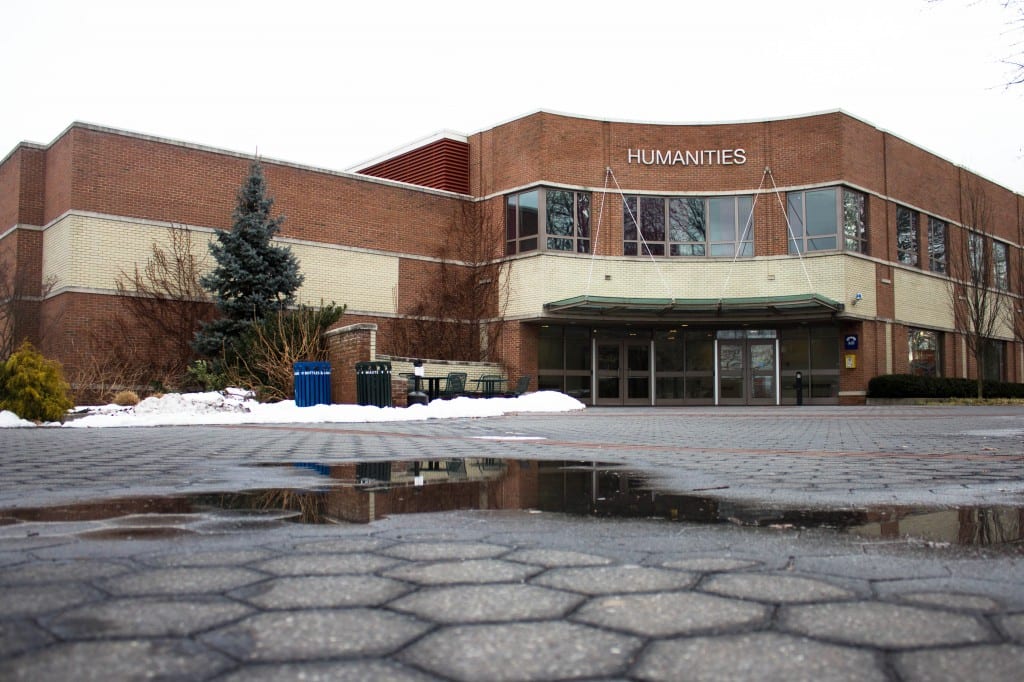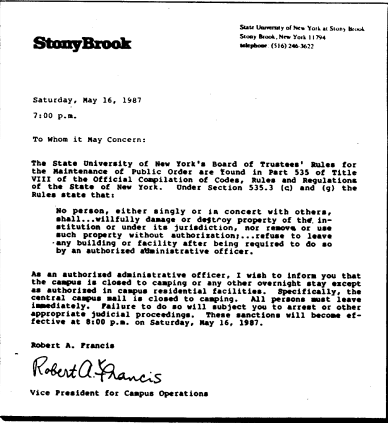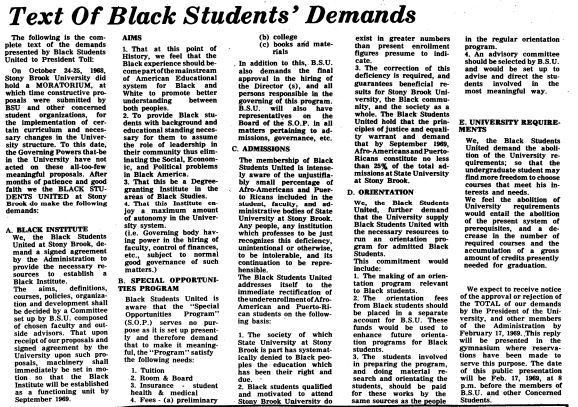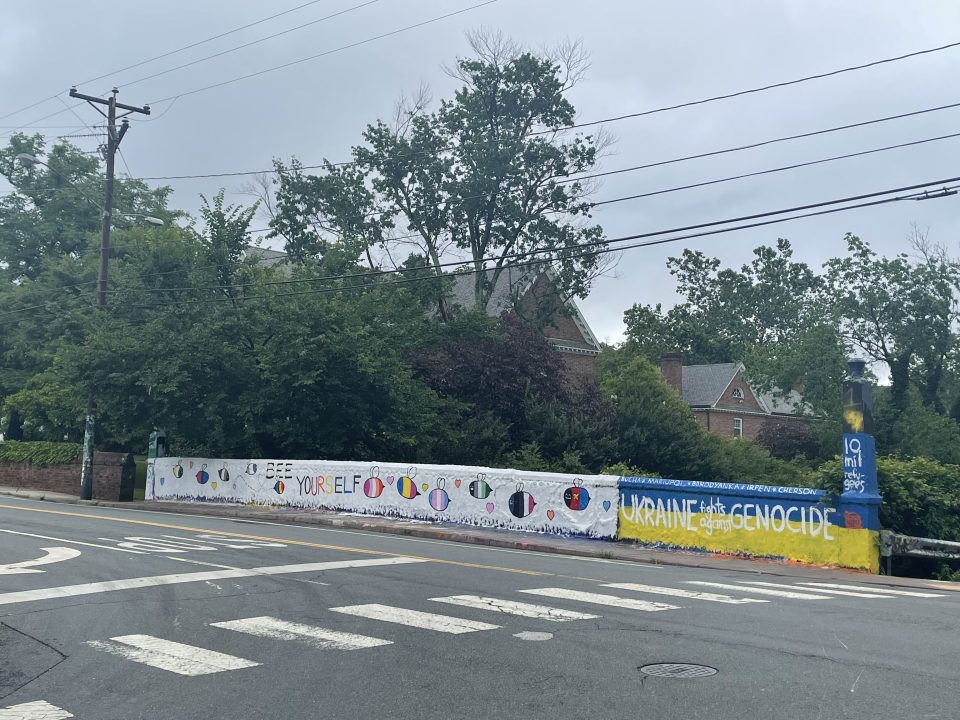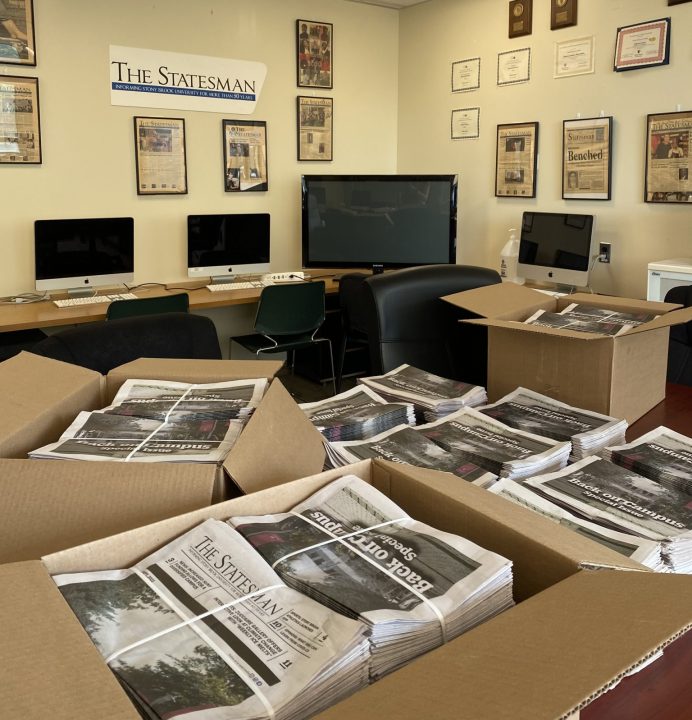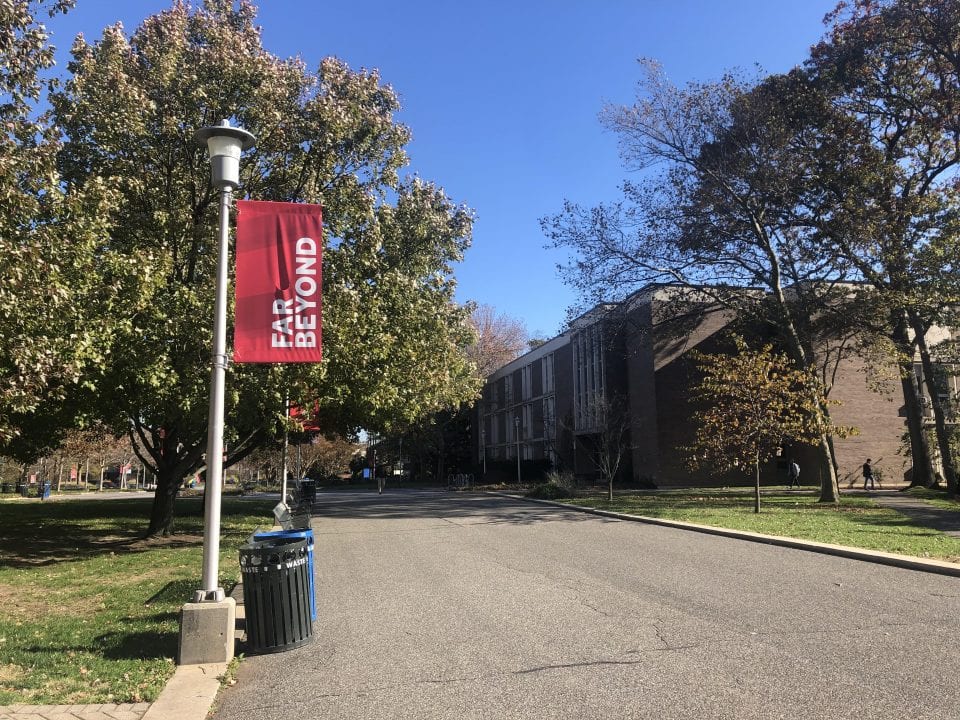
Peter Lupfer is the head archivist at The Statesman and an editor at Stony Brook’s Undergraduate History Journal. This is the first newsletter he’s co-written with Assistant Archivist Kelcie Eberharth, who is also an editor at Stony Brook’s Undergraduate History Journal. This month, they examined precedents for some of the policies Stony Brook University implemented during the pandemic.
Monday, March 9, 2020 was an unusual day at Stony Brook University in more ways than one. With the sun shining and highs in the 70s for the first time that year, campus had a bright and lively feeling typically reserved for the last week of classes.
Students began the day knowing that they were halfway to finals, but by the late afternoon many considered it to be the end of the semester.
Rumors swirled as the day wore on regarding the fate of the academic term and the idea of shifting to remote learning gained more traction with each passing moment. The alarming rise in confirmed COVID-19 cases across New York in recent days had caused the university to prepare for the possibility of transitioning to online classes after the imminent spring break.
Leaked emails and speculation attracted swarms of students to the Staller Steps in celebration. The news became unofficially official before the day was out and The Statesman reported that distance learning would be implemented, although Stony Brook administration wouldn’t issue an announcement until three days later.
Stony Brook, and the entire world for that matter, was about to face an abrupt new reality that we are still dealing with more than a year later. For many students and faculty, the disruptions and alterations to the academic experience have been unlike anything they have ever experienced. But even though the events of 2020 — and now 2021 — have certainly been unprecedented, not every change as of late is brand new.
Some key pandemic-era policies at Stony Brook parallel decisions the university has made before. From debates about pass/fail grading to shutting down Stony Brook campuses amid public health crises, there have been numerous occasions throughout the school’s history that foreshadowed some of the university’s decisions last year.

The first article of this collection, “Pass-Fail-Is It Enough?” was a letter to the editor published on Feb. 9, 1968. Stony Brook student Frank Auld highlights the promise of this option for students while criticizing the university’s poor follow through due to course requirements. He argues that pass-fail grading gives students the opportunity to focus on their time in the classroom instead of the marks they receive. While students have been offered a Grade/Pass/No Credit option for one course per semester since 2012, the shift to online learning introduced a temporarily expanded Pass/No Credit system in 2020 aimed at alleviating the pressures that students faced. Read more here.
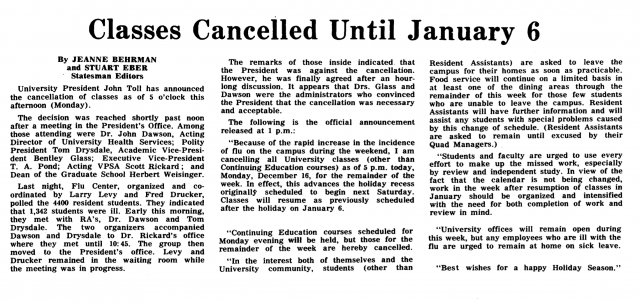
In the 1968 article “Classes Cancelled Until January 6,” Statesman editors Jeanne Behrman and Stuart Eber discuss Stony Brook University President John Toll’s decision to end the fall semester early. After over 1,200 resident students became infected with the flu, resident assistants and campus officials convinced Toll that it was in the best interest of the student body to end classes on Dec. 16. More than 50 years later, Interim President Michael Bernstein and other campus officials faced a similar decision at the onset of the COVID-19 pandemic. While the semester wasn’t canceled, an extended spring break resulted in the term being shortened by one week. Read more here.
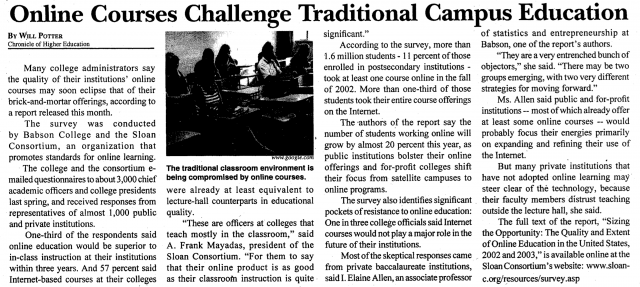
Though the pandemic forced an unexpected transition to conducting all courses online via Zoom, Will Potter’s 2003 article “Online Courses Challenge Traditional Campus Education” shows that implementing virtual learning has been a long-term process. While some rejected the concept of online classes ever becoming the standard, the article highlights a 2003 survey of chief academic officers and college presidents conducted by Babson College and the Sloan Consortium that portrays it as a promising alternative. Read more here.

Finally, Jacqueline Flareau’s 2010 piece “Students Gather for South P Drive-In Movie” discusses the versatility of Stony Brook’s commuter parking lot. South P lot has played host to many events through the years, including drive-in movies like the one described in this article. Since March 2020, however, the space has been the home of a mobile coronavirus testing center. Read more here.
None of this is to suggest that the past year should not be considered unprecedented; in fact there are few better ways to describe the totality of what has occurred. The impact of COVID-19 related changes within the university has been greater than the sum of each individual change seen, but perhaps there is some solace in knowing that the school has successfully navigated many of those parts in the past.

